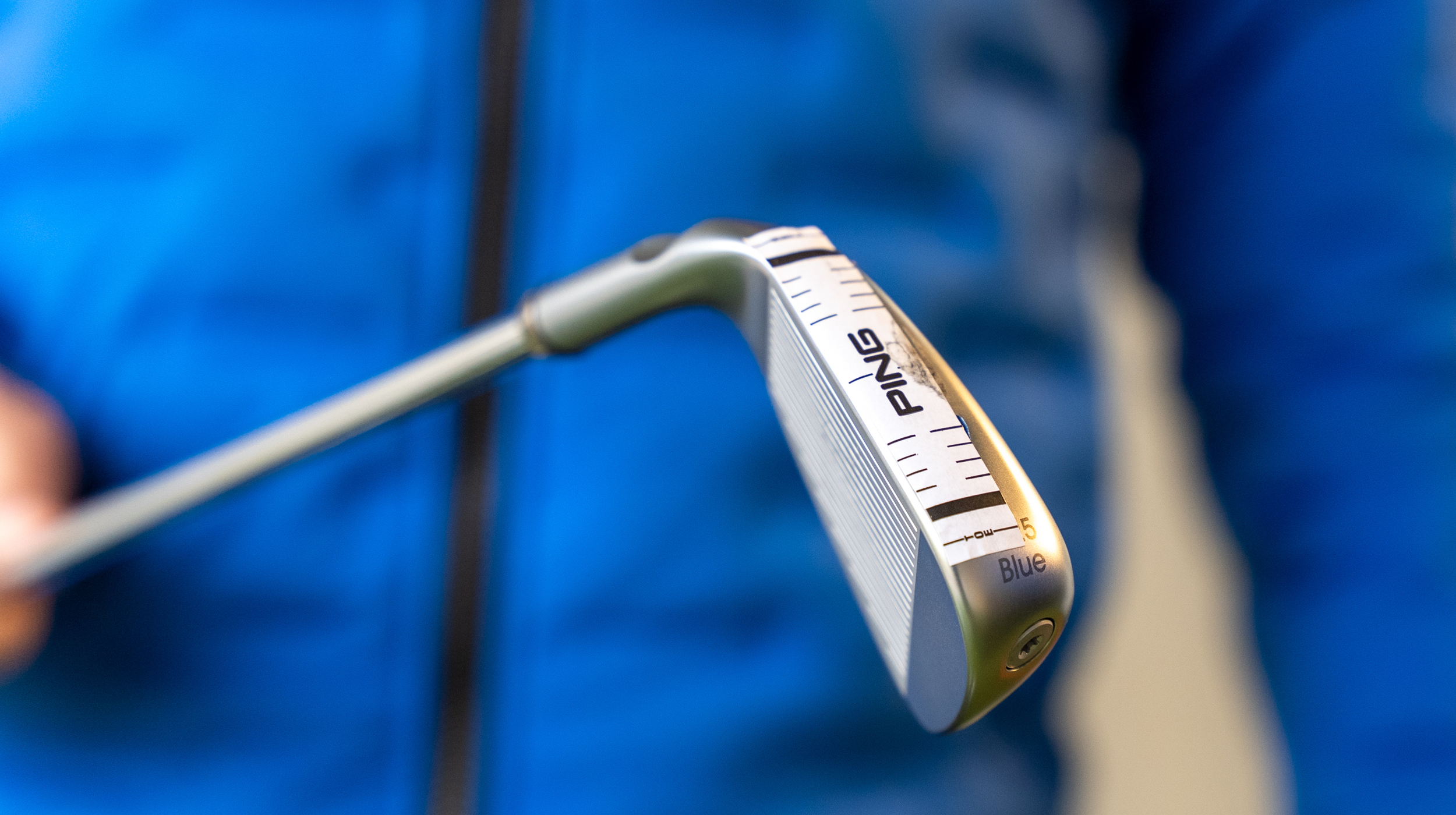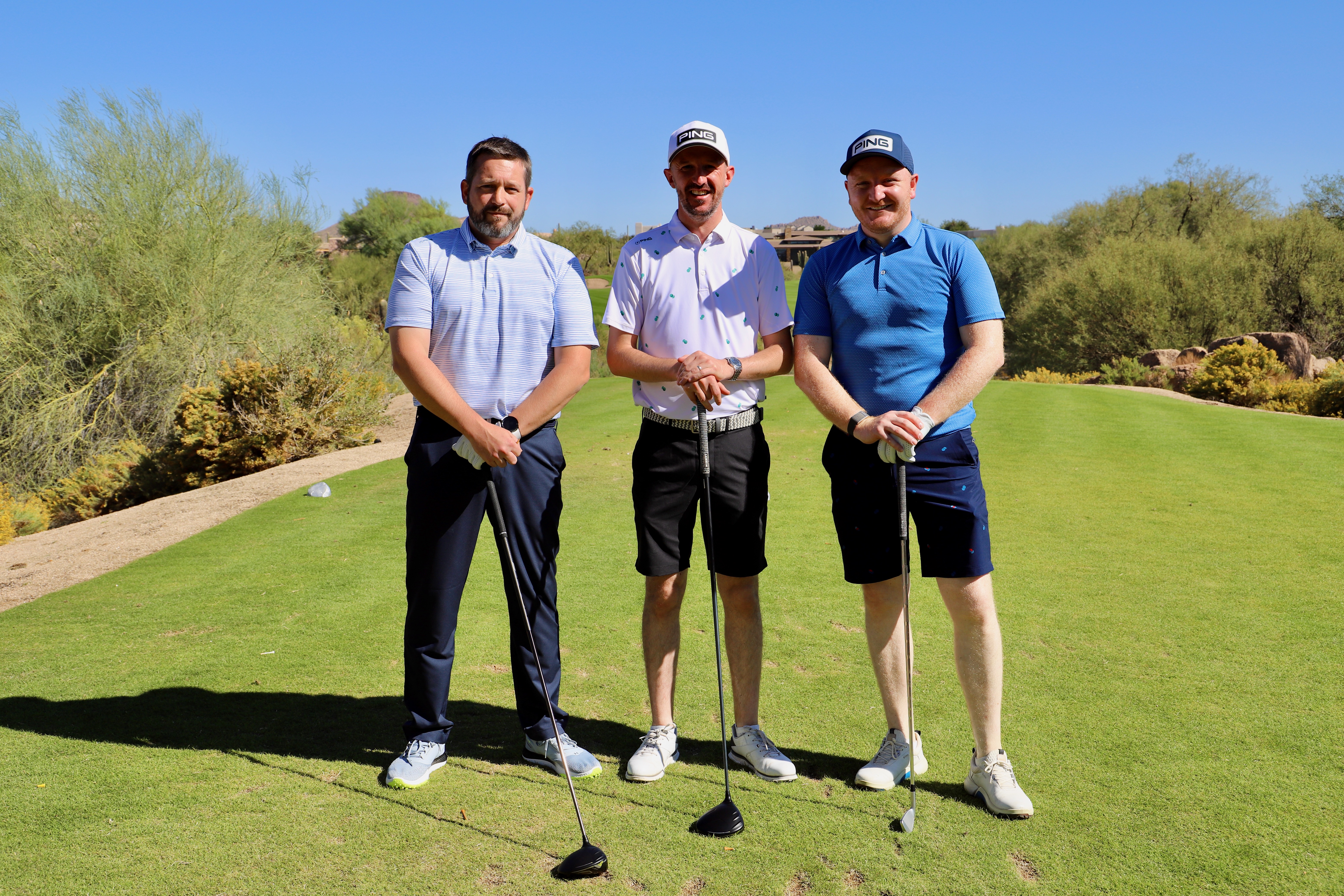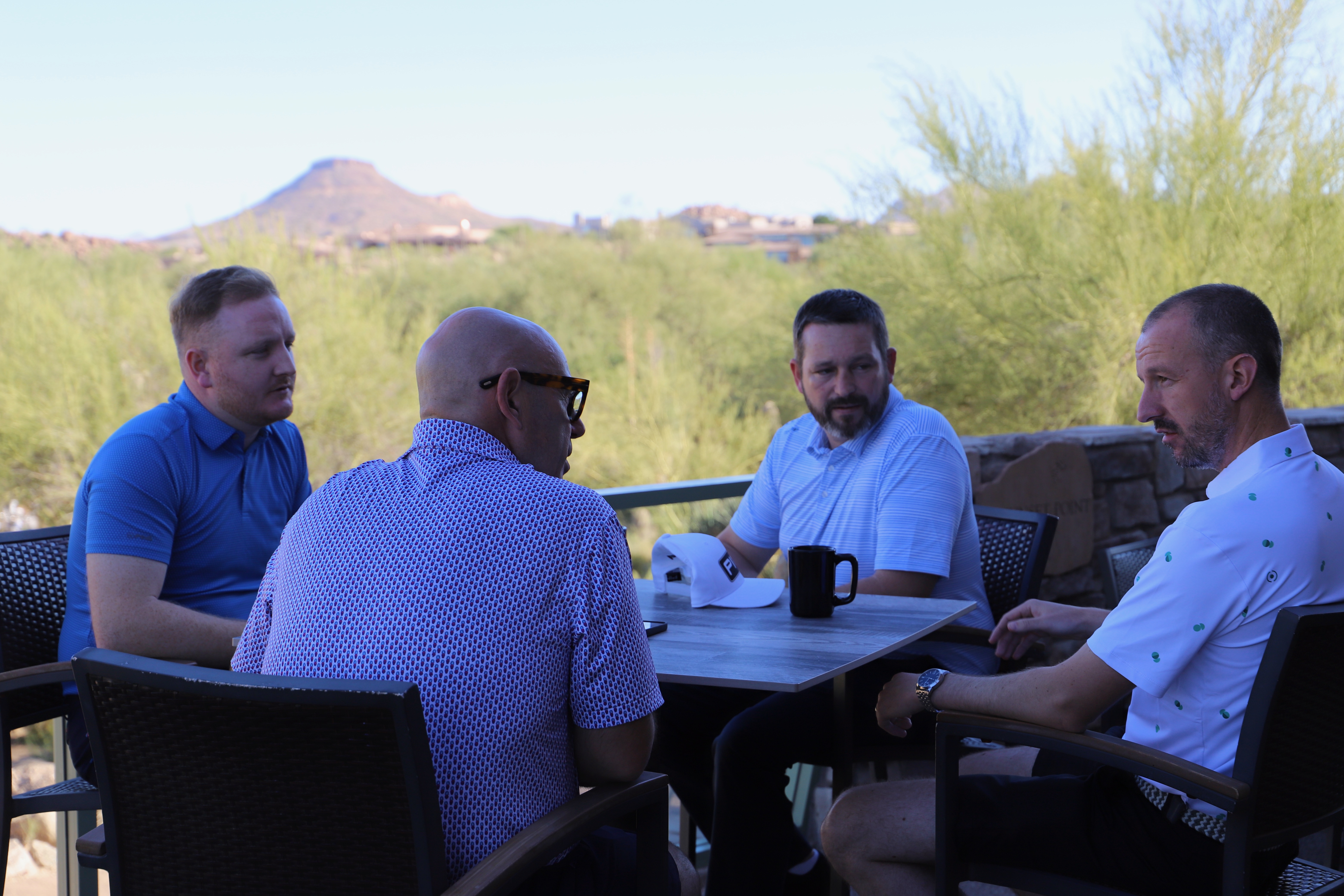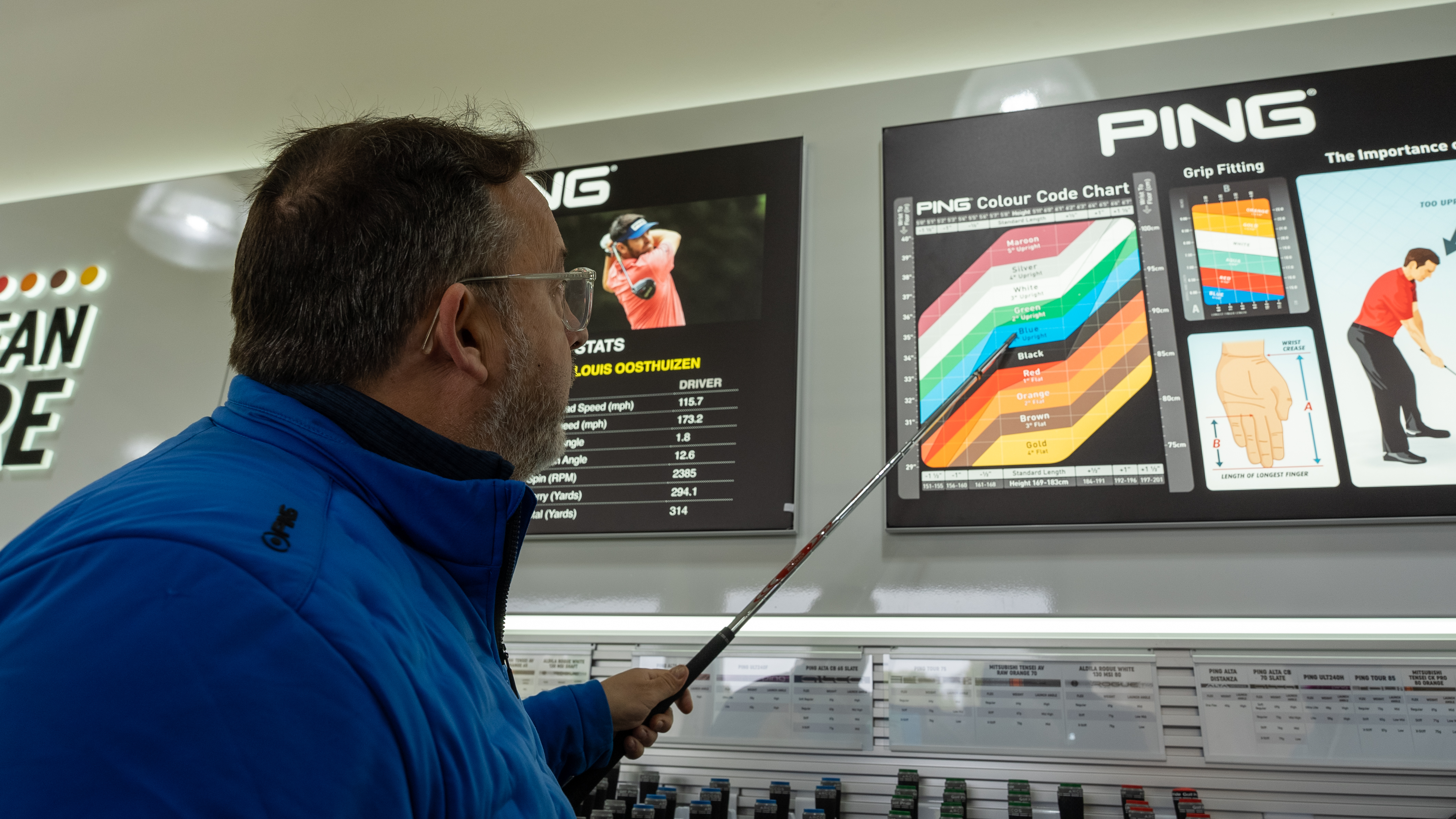
We put these questions and more to three of the UK & Ireland’s top custom fitting experts - Chris Robinson of Portpatrick Dunskey GC in Scotland, Ciarán Hegarty of Millicent GC in Ireland and Daniel Skelcher of Fleetwood GC in England.
The trio are all partners of the TGI Golf Partnership - Europe’s leading golf retail services group owned by PGA Professionals - and were crowned as TGI Ping Custom Fitters of the Year.
Golf Monthly’s Mike Harris sat down with them in the USA during their visit to Ping HQ in Scottsdale, Arizona to talk about all things custom fitting.

Golf Monthly (GM)
How has fitting evolved since you did your first fitting as a PGA pro?
Chris Robinson (CR)
We’ve come a long way since when I started and we were working with a bag of 6-irons, where you’d be saying, ‘Well, it’s that head but it’s that shaft in that head over there.’ We’d be very unlikely to have the right club for each golfer and we didn’t have the ability to just switch heads and shafts so quickly like you can today.
Daniel Skelcher (DS)
There were no launch monitors when I started fitting. It was all about standing down the line and observing the ball flight. If the customer was happy with the feel, the looks and the weight of the club, and you got a consistent flight, you were on to a winner.
I remember when Mizuno’s Swing DNA system came in - it was the first of its kind and was such a great tool. It took the customer on a journey that I still kind of follow now.
Selecting the right category of shaft is a great starting point, getting the right weight of the club, getting the right feel and then fine tuning it to the head that the golfer is comfortable with.
We’ve now got the Ping Co-Pilot that can pretty much fit the full bag with optimised gapping through the set, all from 7-iron data. It’s an amazing piece of technology.
Ciarán Hegarty (CH)
In the early days of irons fitting it may have been a case of, ‘Great, you’re 20 yards further than you were before!’ … but the ball might not have been stopping when it landed. Understanding spin and descent angle on irons has changed things a lot for me. In the early days, there wasn’t as much knowledge around fitting as there is now. It’s changed so much in the last 10 years, with a lot more detail.

GM
Do you think there is an ability level golfers need to get to before a fitting is beneficial?
CR
That’s changed. I think people used to think that it was only for better players, but now fitters and golfers are much more switched on to the fact that a custom fitting is going to benefit golfers whatever level they are - the benefits and gains will just be different for different ability levels.
CH
It’s definitely for everyone. If you take a beginner who’s really struggling to get the ball airborne with their irons; and you get them hitting a forgiving head with the right sole width and it isn’t too heavy a swing weight; and pair that with a lightweight shaft that is aimed at helping the golfer launch the ball, all of a sudden they’re going to start playing better golf without having to change their technique.
If you then add on the expertise we can offer as a coach - as well as a fitter - then I know we can help golfers play better and enjoy their golf in a shorter time than if we’re only trying to get gains via a fitting.

GM
If someone turns up for a fitting and they’re swinging it really badly, how do you approach that?
CR
I’ve had situations where I’ve delayed the fitting and gone straight into lesson mode. I then get the golfer back a few weeks later, when they’re swinging it better. Golfers will appreciate that because they understand that you are actually trying to do the best for their game.
DS
It’s interesting as there’s swinging badly and there’s also fatigue during a fitting where golfers can lose their swing if they’ve hit too many balls, or are trying too hard during a fitting. We call it ‘burnout’. I try to limit the number of shots they hit with each option of club/shaft to a maximum of seven. Sometimes it only takes three shots. We can eliminate options from there and find what’s best more quickly.
GM
Do you find yourself having to try and manage the desire for extra distance from golfers?
CR
Yes! A lot of golfers get hooked into distance straight away. For me, it’s about controllable distance and trying to educate a golfer that what we're really after is the right ball flight and that distance can’t be at the cost of accuracy. Sometimes golfers want a little bit more distance and you have to say, ‘Ok, but you might have to give up something else to get that, probably accuracy.’
CH
I hide the carry and distance data. I think if you start showing carry distance straight away, golfers just start swinging for the fences – and then you’ve lost control of the fitting. So, I start off the fitting by saying what we’re going to be looking for in terms of launch, spin and descent angle, and give them a ballpark of where we should be in terms of distance. At the end, I might say, ‘That’s given you an extra 15-20 yards.’

GM
What are the most important clubs to be fitted for?
CH
It depends on the player. For better players, it’s wedges. For your average golfer, it’s hybrids and that longer area in the bag where they’re going to be hitting most of their shots, because their driver is only going maybe 200 yards and they’re going to be mostly hitting 4-6-irons in all day. If they’re standing there with a 10-year old set of irons , they’re not giving themselves the best chance of hitting the green. It is important to give them that better understanding of what those high to mid irons are doing.
GM
How important is grip size?
DS
Really important. If you get that right, you get a better feel, and then you get more consistency. It’s something we do for every fitting with a measurement. Actually having a grip that you can put into the hand with a built club, I think that’s where we’re going to invest more in the future, so having more shaft options with different grip sizes fitted, from oversize to undersize.







